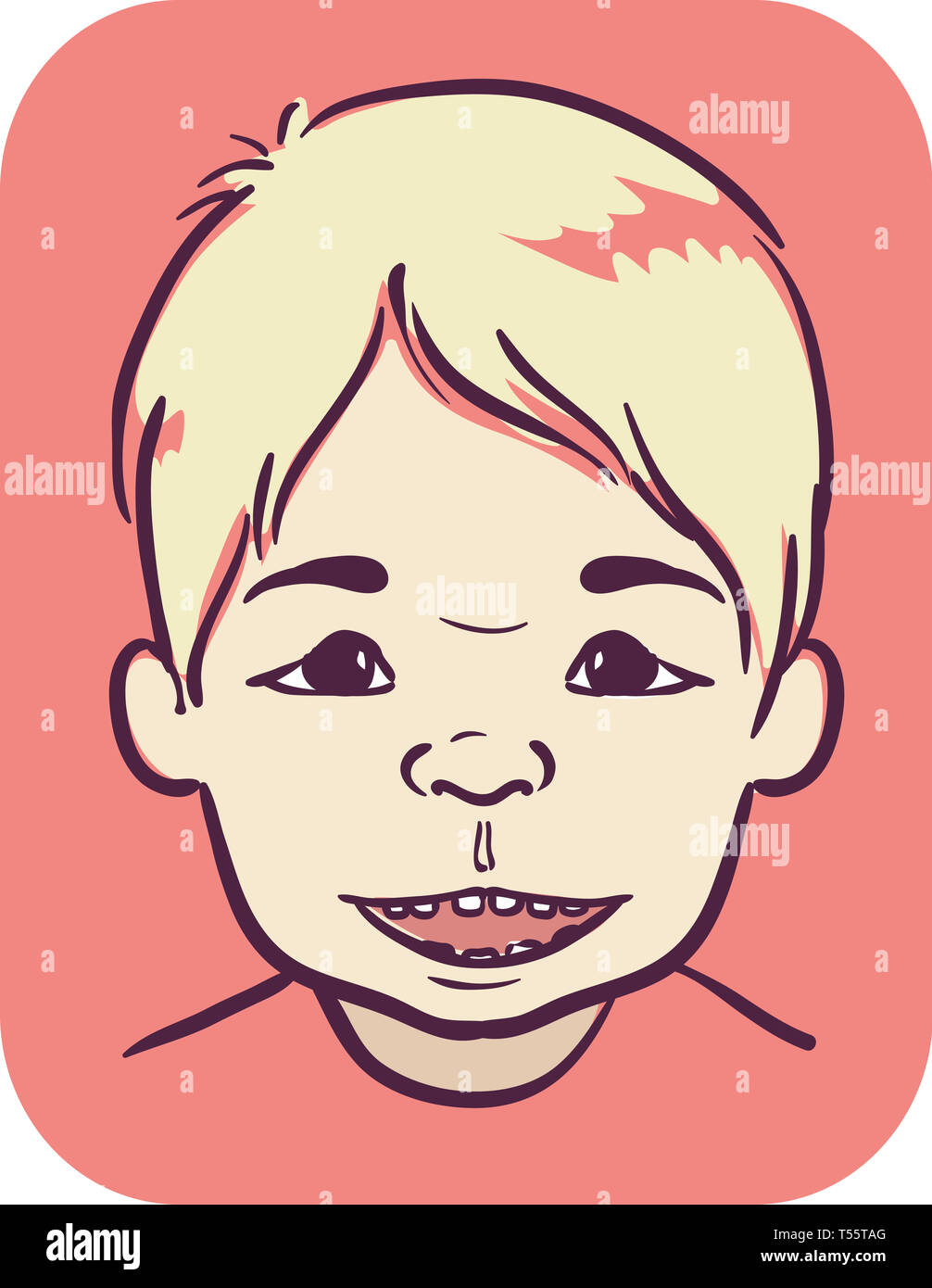Learn about the symptoms, causes and tests for Angelman syndrome, a genetic disorder that affects brain development and causes developmental delays, seizures and behavioral issues. Find out how to cope and get support from Mayo Clinic experts and resources.
Due to common characteristics that AS shares with other disorders (developmental delays, motor issues, and lack of cooing, babbling or speech), 50% of individuals with Angelman syndrome are originally misdiagnosed.
Beim Angelman-Syndrom handelt es sich um eine seltene genetisch bedingte Erkrankung, die sich unter anderem in geistiger und körperlicher Behinderung, Entwicklungsverzögerungen (vor allem einer stark reduzierten Sprachentwicklung), sowie Hyperaktivität äußert. Verantwortlich dafür ist ein defektes Gen auf Chromosom 15 (q11.2 - q11.13). Es ist nach dem englischen Entdecker Angelman
Das Angelman-Syndrom tritt sowohl beim männlichen als auch beim weiblichen Geschlecht auf. Die Häufigkeit beträgt zirka 1:15.Die Historie zum Angelman-Syndrom Dr. Harry Angelman, englischer Kinderarzt mit dem Spezialgebiet Neurologie, beschrieb das Syndrom erstmals in einem 1965 veröffentlichten Artikel. Er hatte drei Kinder mit
Angelman syndrome; Other names: Angelman's syndrome [1] [2]: A five-year-old girl with Angelman syndrome. Features shown include telecanthus, bilateral epicanthic folds, small head, wide mouth, and an apparently happy demeanor; hands with tapered fingers, abnormal creases and broad thumbs.: Pronunciation / ˈ æ ŋ ɡ ə l m ə n /, [3] [1] / ˈ æ n dʒ əl m ə n /, [2] [4] or / ˈ eɪ n dʒ
Due to common characteristics that AS shares with other disorders (developmental delays, motor issues, and lack of cooing, babbling or speech), 50% of individuals with Angelman syndrome are originally misdiagnosed. Beim Angelman-Syndrom handelt es sich um eine seltene genetisch bedingte Erkrankung, die sich unter anderem in geistiger und körperlicher Behinderung, Entwicklungsverzögerungen (vor allem einer stark reduzierten Sprachentwicklung), sowie Hyperaktivität äußert. Verantwortlich dafür ist ein defektes Gen auf Chromosom 15 (q11.2 - q11.13). Es ist nach dem englischen Entdecker Angelman Das Angelman-Syndrom tritt sowohl beim männlichen als auch beim weiblichen Geschlecht auf. Die Häufigkeit beträgt zirka 1:15.Die Historie zum Angelman-Syndrom Dr.
Harry Angelman, englischer Kinderarzt mit dem Spezialgebiet Neurologie, beschrieb das Syndrom erstmals in einem 1965 veröffentlichten Artikel. Er hatte drei Kinder mit Angelman syndrome; Other names: Angelman's syndrome [1] [2]: A five-year-old girl with Angelman syndrome. Features shown include telecanthus, bilateral epicanthic folds, small head, wide mouth, and an apparently happy demeanor; hands with tapered fingers, abnormal creases and broad thumbs.: Pronunciation / ˈ æ ŋ ɡ ə l m ə n /, [3] [1] / ˈ æ n dʒ əl m ə n /, [2] [4] or / ˈ eɪ n dʒ
Angelman syndrome is a genetic disorder that primarily affects the nervous system. Characteristic features of this condition include developmental delay, intellectual disability, severe speech impairment, problems with movement and balance (ataxia), epilepsy, and a small head size.
In 1965 Harry Angelman, a British pediatrician, described the "Puppet Children," later being renamed Angelman syndrome (AS). Angelman described three children who had similar symptoms of learning disability, minimal or absent speech, ataxic and jerky movements, and a happy social disposition.[1]
Angelman syndrome is a rare condition that affects your child's speech, development and movement. Seizures are common. Children are usually very expressive — they may smile and laugh often or get excited easily.
Angelman syndrome is a genetic disorder that primarily affects the nervous system. Characteristic features of this condition include developmental delay, intellectual disability, severe speech impairment, problems with movement and balance (ataxia), epilepsy, and a small head size.
Angelman syndrome | About the Disease | GARD - Genetic and Rare
Angelman syndrome is a genetic disorder that primarily affects the nervous system. Characteristic features of this condition include developmental delay, intellectual disability, severe speech impairment, problems with movement and balance (ataxia), epilepsy, and a small head size. In 1965 Harry Angelman, a British pediatrician, described the "Puppet Children," later being renamed Angelman syndrome (AS). Angelman described three children who had similar symptoms of learning disability, minimal or absent speech, ataxic and jerky movements, and a happy social disposition.[1] Angelman syndrome is a rare condition that affects your child's speech, development and movement. Seizures are common.
Children are usually very expressive — they may smile and laugh often or get excited easily. Angelman syndrome is a genetic disorder that primarily affects the nervous system. Characteristic features of this condition include developmental delay, intellectual disability, severe speech impairment, problems with movement and balance (ataxia), epilepsy, and a small head size.
Learn about the genetic disorder that causes developmental delay, intellectual disability, seizures, and happy demeanor. Find out how to participate in clinical trials and access resources for AS.
Angelman syndrome (AS) is an uncommon neurogenetic disorder characterized by mental retardation, abnormal gait, speech impairment, seizures, and an inappropriate happy demeanor that includes frequent laughing, smiling, and excitability. The uncoordinated gait and laughter have caused some people to refer to this disorder as the "happy puppet" syndrome.
Angelman syndrome is a complex genetic disorder that causes developmental and neurological problems, such as severe speech impairment and trouble walking and balancing ().Affects about 1 in 10,000 people
Disease Overview. Summary. Angelman syndrome is a rare genetic and neurological disorder characterized by severe developmental delay and learning disabilities; absence or near absence of speech; inability to coordinate voluntary movements (ataxia); tremulousness with jerky movements of the arms and legs and a distinct behavioral pattern characterized by a happy disposition and unprovoked
Angelman Syndrome - Symptoms, Causes, Treatment | NORD
Learn about the genetic disorder that causes developmental delay, intellectual disability, seizures, and happy demeanor. Find out how to participate in clinical trials and access resources for AS. Angelman syndrome (AS) is an uncommon neurogenetic disorder characterized by mental retardation, abnormal gait, speech impairment, seizures, and an inappropriate happy demeanor that includes frequent laughing, smiling, and excitability. The uncoordinated gait and laughter have caused some people to refer to this disorder as the "happy puppet" syndrome. Angelman syndrome is a complex genetic disorder that causes developmental and neurological problems, such as severe speech impairment and trouble walking and balancing ().Affects about 1 in 10,000 people Disease Overview.
Summary. Angelman syndrome is a rare genetic and neurological disorder characterized by severe developmental delay and learning disabilities; absence or near absence of speech; inability to coordinate voluntary movements (ataxia); tremulousness with jerky movements of the arms and legs and a distinct behavioral pattern characterized by a happy disposition and unprovoked
Treatment. There's no cure for Angelman syndrome. Research is looking at targeting certain genes for treatment. Current treatment focuses on managing symptoms and addressing the developmental delays in children with Angelman syndrome.
Angelman syndrome (AS) is a rare neurogenetic disorder that affects about one in 15,000 people, or approximately 500,000 individuals worldwide.
Das Angelman-Syndrom entsteht also durch einen Funktionsverlust der mütterlichen Genkopie von UBE3A. Dieser kann verschiedene Ursachen haben. (Dabei haben die Mütter der betroffenen Kinder meist ein intaktes Chromosom Darum ist ihr Risiko, noch ein Kind mit Angelman-Syndrom zu bekommen, allgemein gering.)
Angelman syndrome is a rare genetic disorder that affects brain development and causes delayed speech, movement, and learning problems. Learn about the symptoms, causes, diagnosis, and treatment options from Mayo Clinic experts.
In 1965 Harry Angelman, a British pediatrician, described the "Puppet Children," later being renamed Angelman syndrome (AS). Angelman described three children who had similar symptoms of learning disability, minimal or absent speech, ataxic and jerky movements, and a happy social disposition.[1]
Angelman Syndrome - StatPearls - NCBI Bookshelf
Angelman syndrome (AS) is a rare neurogenetic disorder that affects about one in 15,000 people, or approximately 500,000 individuals worldwide. Das Angelman-Syndrom entsteht also durch einen Funktionsverlust der mütterlichen Genkopie von UBE3A. Dieser kann verschiedene Ursachen haben. (Dabei haben die Mütter der betroffenen Kinder meist ein intaktes Chromosom Darum ist ihr Risiko, noch ein Kind mit Angelman-Syndrom zu bekommen, allgemein gering.) Angelman syndrome is a rare genetic disorder that affects brain development and causes delayed speech, movement, and learning problems. Learn about the symptoms, causes, diagnosis, and treatment options from Mayo Clinic experts.
In 1965 Harry Angelman, a British pediatrician, described the "Puppet Children," later being renamed Angelman syndrome (AS). Angelman described three children who had similar symptoms of learning disability, minimal or absent speech, ataxic and jerky movements, and a happy social disposition.[1]
Angelman syndrome (AS) is characterized by severe developmental delay or intellectual disability, severe speech impairment, gait ataxia and/or tremulousness of the limbs, and unique behavior with an apparent happy demeanor that includes frequent laughing, smiling, and excitability. Microcephaly and seizures are also common. Developmental delays are first noted at around age six months; however
Early signs of Angelman syndrome typically include balance and motor problems associated with ataxia (the inability to coordinate muscle movements). As a result, movements are often jerky and accompanied by fine tremors in the arms and legs.
Angelman Syndrome is a rare genetic disorder affects the nervous system. People with the condition may have developmental delays, learning disabilities, speech impairment and problems with balance and coordination.
Symptoms of Angelman syndrome. Some symptoms can vary and be more severe than others, but in most children diagnosed with AS, the following are present:
Symptoms and Causes - Angelman Syndrome Foundation
Angelman syndrome (AS) is characterized by severe developmental delay or intellectual disability, severe speech impairment, gait ataxia and/or tremulousness of the limbs, and unique behavior with an apparent happy demeanor that includes frequent laughing, smiling, and excitability. Microcephaly and seizures are also common. Developmental delays are first noted at around age six months; however Early signs of Angelman syndrome typically include balance and motor problems associated with ataxia (the inability to coordinate muscle movements). As a result, movements are often jerky and accompanied by fine tremors in the arms and legs. Angelman Syndrome is a rare genetic disorder affects the nervous system.
People with the condition may have developmental delays, learning disabilities, speech impairment and problems with balance and coordination. Symptoms of Angelman syndrome. Some symptoms can vary and be more severe than others, but in most children diagnosed with AS, the following are present:
Angelman Syndrome is a rare genetic disorder affects the nervous system. People with the condition may have developmental delays, learning disabilities, speech impairment and problems with balance and coordination.
Das Angelman-Syndrom (engl.: Happy-Puppet-Syndrome) ist eine seltene, genetisch bedingte Erkrankung. Sie äußert sich unter anderem durch geistige und körperliche Einschränkungen, Entwicklungsstörungen (vor allem der Sprache) und Hyperaktivität. Auffällig ist das puppenhafte Aussehen und der freudige Gesichtsausdruck der Betroffenen.
In this review we summarize the clinical and genetic aspects of Angelman syndrome (AS), its molecular and cellular underpinnings, and current treatment strategies. AS is a neurodevelopmental disorder characterized by severe cognitive disability, motor dysfunction, speech impairment, hyperactivity, a …




